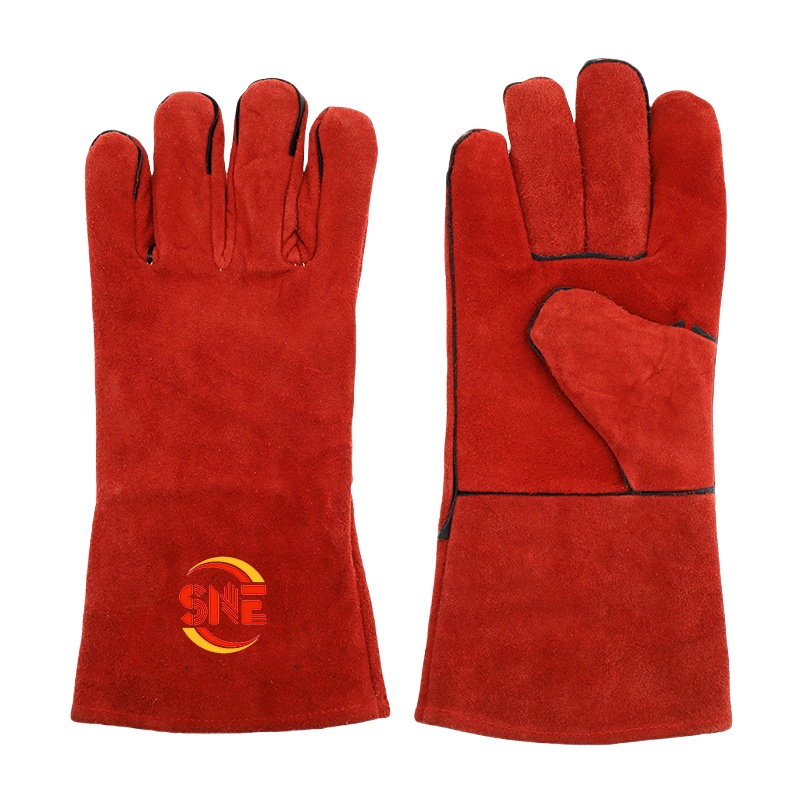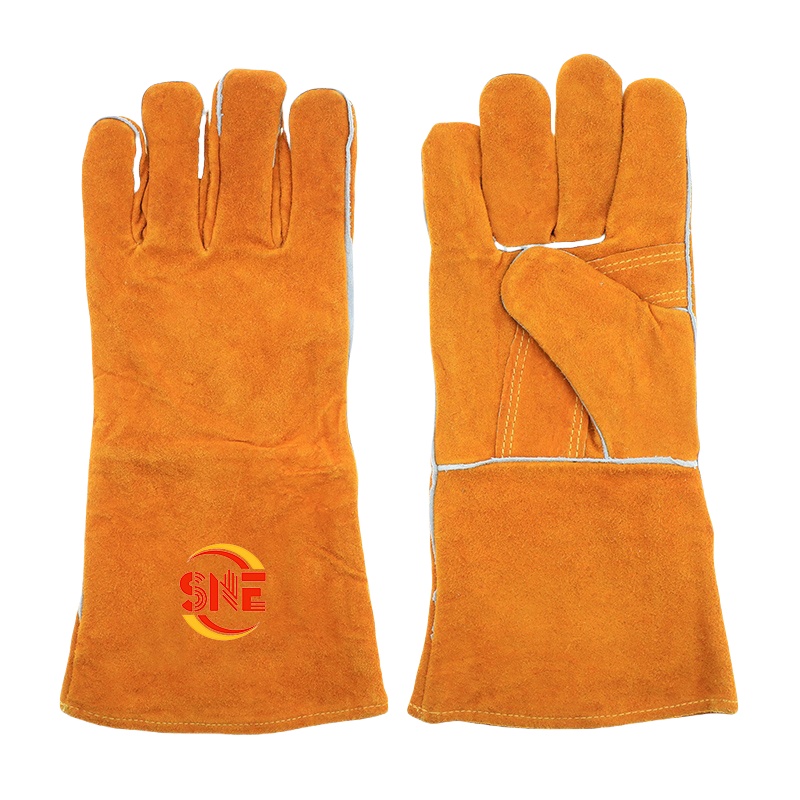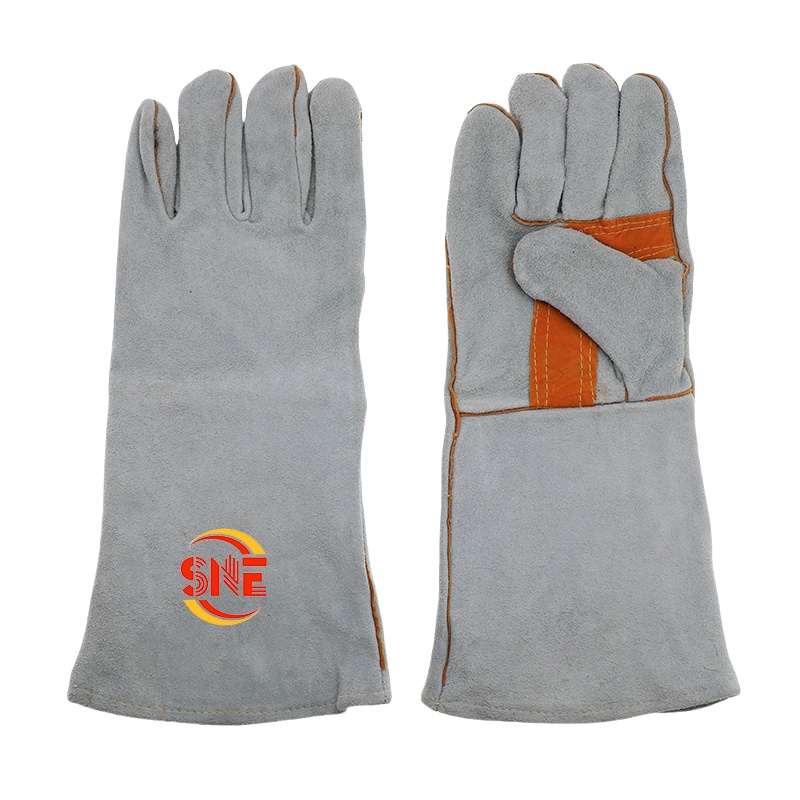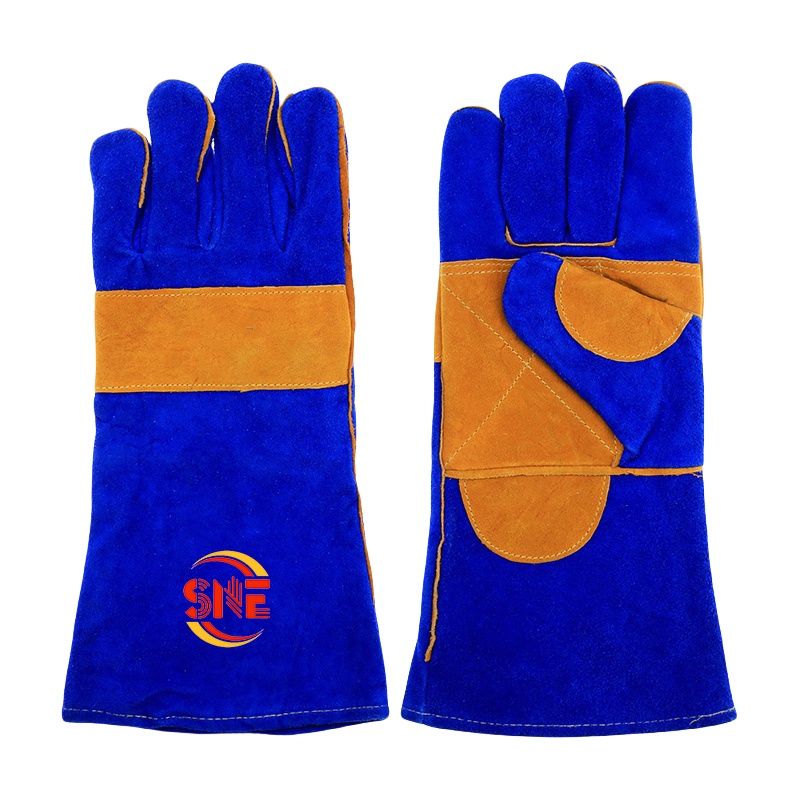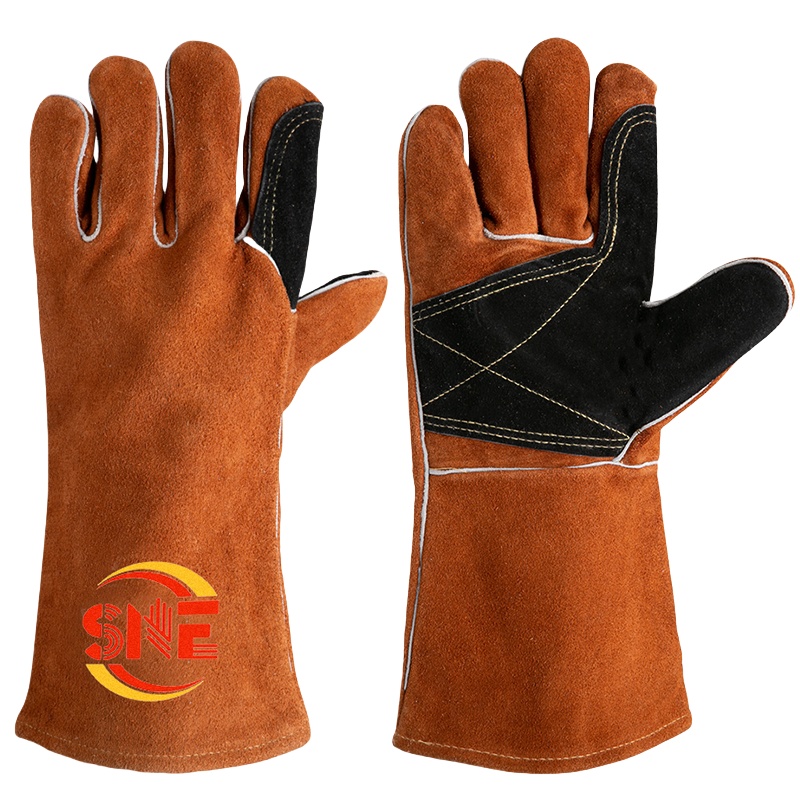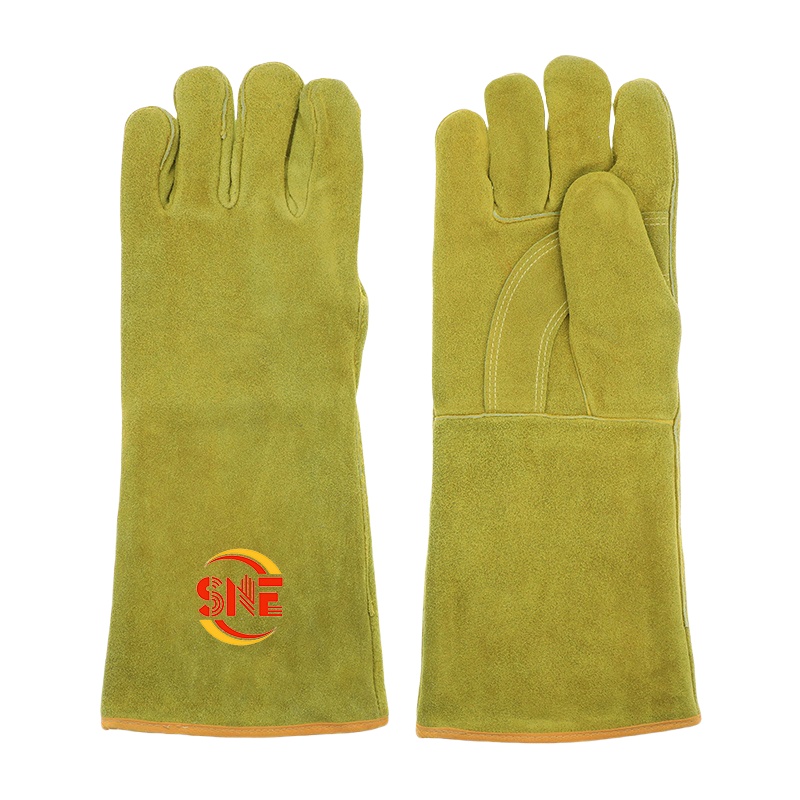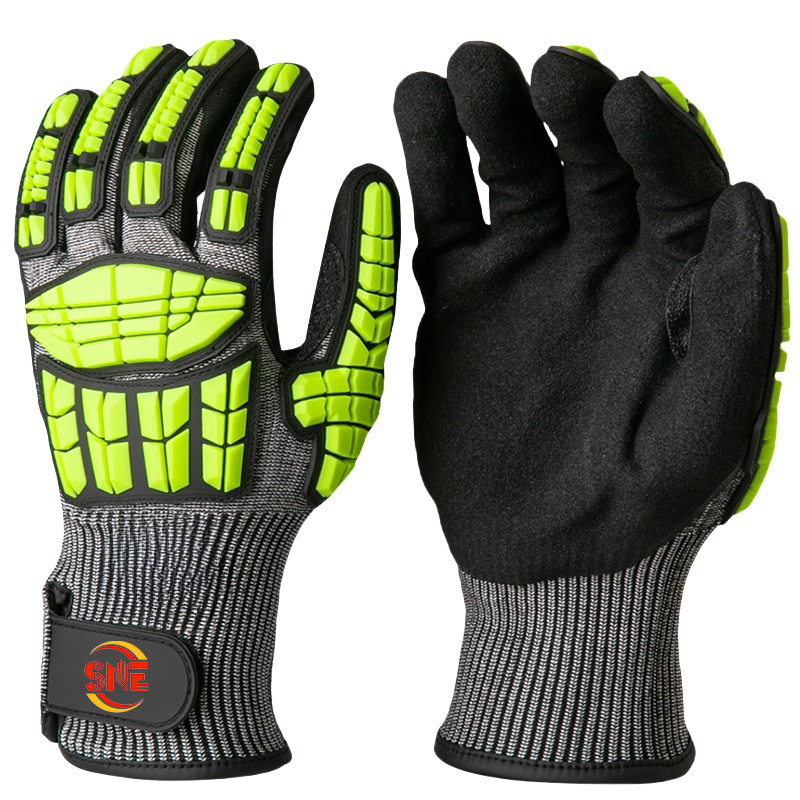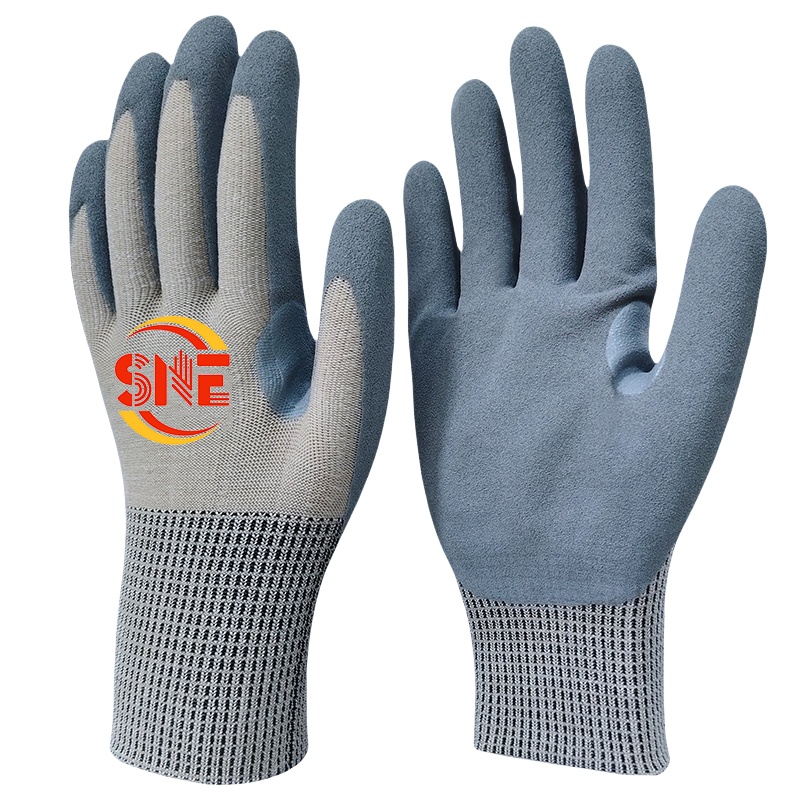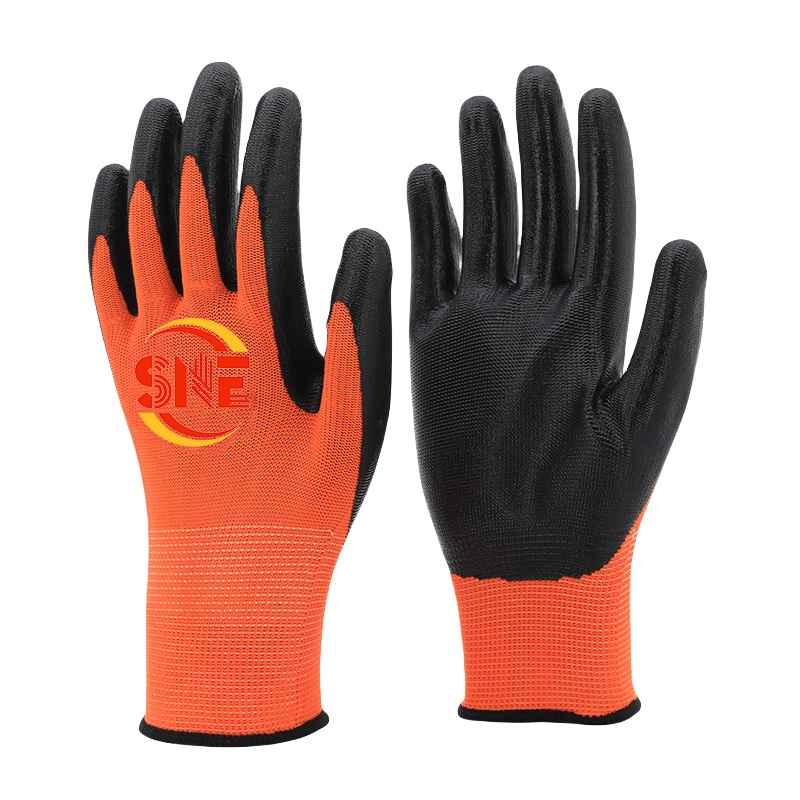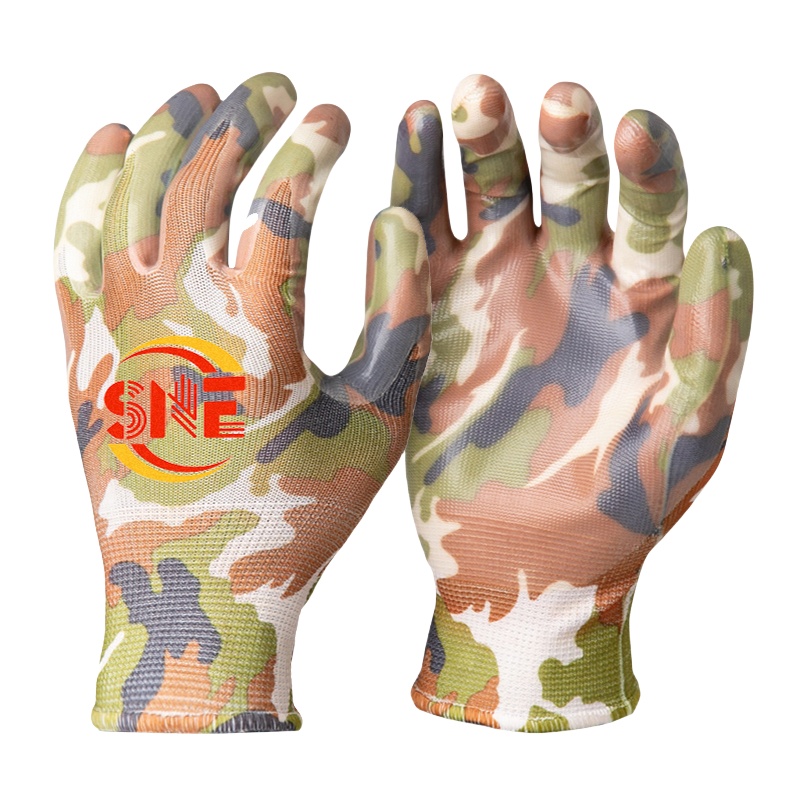OEM Work Gloves Factory: Ultimate Guide to Oil Resistant Gloves Wholesale in 2025
October 23, 2025
Share This Article
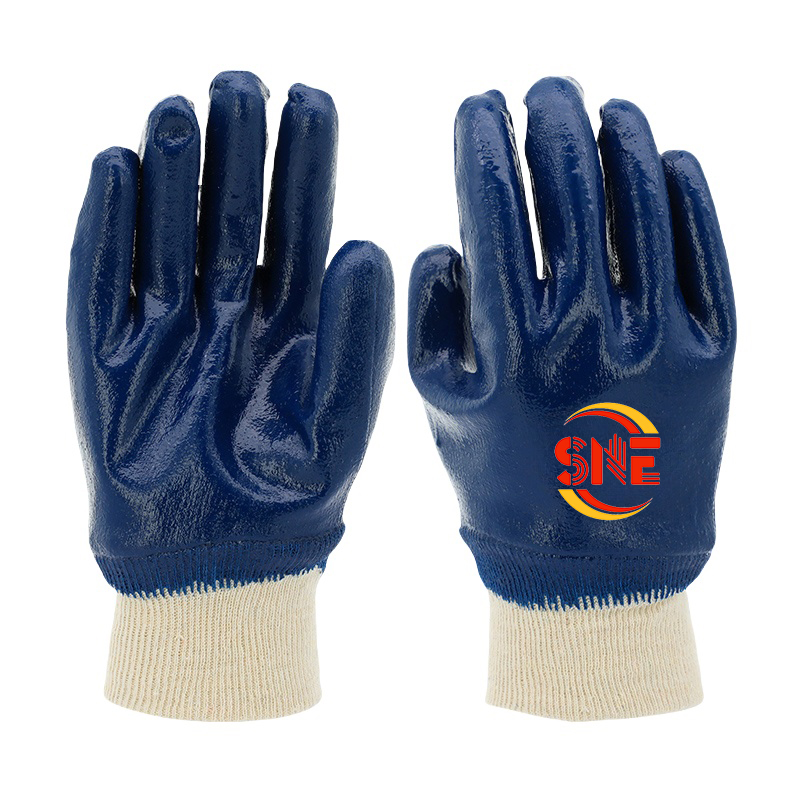
Oil resistant work gloves have become essential protective equipment across numerous industrial sectors where workers handle oils, greases, and other petroleum-based substances. As workplace safety standards continue to evolve, finding the right wholesale supplier for these specialized gloves has never been more important. This comprehensive guide explores everything businesses need to know about sourcing high-quality oil resistant gloves from OEM work glove factories in 2025.
What Are Oil Resistant Gloves?
Oil resistant gloves are specialized hand protection designed to prevent oils, greases, petroleum products, and other hydrocarbon-based substances from making contact with the skin. Unlike standard work gloves, these gloves are manufactured with materials specifically engineered to resist degradation when exposed to oils while providing essential grip and dexterity in slippery environments.
The technology behind oil resistant gloves has advanced significantly in recent years. Modern oil resistant gloves utilize specialized polymer coatings and materials that create a barrier against oil penetration while maintaining breathability and comfort. These innovations have made them indispensable in industries ranging from automotive and manufacturing to chemical processing and petroleum engineering.
Key features that differentiate oil resistant gloves include:
- Chemical Resistance: High-quality oil resistant gloves provide protection against not just oils but often a range of chemicals as well.
- Grip Performance: Advanced surface texturing ensures secure handling of oily components and tools.
- Coating Technology: Specialized nitrile, PVC, or neoprene coatings provide the oil resistance without compromising dexterity.
- Durability: Enhanced materials ensure longer glove lifespan even with regular exposure to harsh substances.
- Comfort Features: Breathable liners and ergonomic designs allow for extended wear without discomfort.
The global demand for oil resistant gloves continues to grow as industries prioritize both worker safety and operational efficiency. Today’s industrial environments require gloves that not only protect against oil penetration but also provide adequate mechanical protection, comfort for extended wear, and compliance with increasingly stringent safety regulations.
How to Choose the Best Oil Resistant Gloves for Your Business
Selecting the right oil resistant gloves for your specific business needs requires careful consideration of multiple factors. The ideal glove should balance protection, functionality, comfort, and cost-effectiveness while meeting industry-specific requirements.
Evaluating Your Industry Requirements
Different industries have varying demands when it comes to oil resistant gloves:
- Automotive industry: Requires excellent dexterity for handling small parts along with protection from engine oils, transmission fluids, and solvents.
- Oil and gas sector: Needs heavy-duty protection against crude oil and drilling fluids, often combined with impact protection.
- Manufacturing: Typically requires balanced protection against machine oils while maintaining precision handling capabilities.
- Food processing: Demands oil resistance combined with food-safe materials and often requires frequent glove changes.
Material Selection for Oil Resistance
The material composition fundamentally determines a glove’s oil resistance capabilities:
- Nitrile: Provides excellent resistance to oils, greases, and many chemicals. Nitrile gloves offer superior puncture resistance compared to other materials and are ideal for precision work.
- PVC/Vinyl: Offers good oil resistance at a lower cost point, though typically less durable than nitrile. These gloves work well in moderate exposure situations.
- Neoprene: Delivers excellent oil resistance along with protection against acids and caustics, making them versatile for environments with multiple hazards.
- NBR (Nitrile Butadiene Rubber): Combines oil resistance with increased comfort and flexibility, suitable for extended wear applications.
Qingdao Snell offers specialized oil resistant gloves using advanced nitrile formulations that provide superior resistance to degradation, even in prolonged contact with heavy oils and petroleum products.
Coating Considerations
The coating type and application method significantly impact a glove’s performance in oily environments:
- Full coating: Provides maximum protection against liquid penetration but may reduce breathability.
- Palm coating: Balances protection with increased hand ventilation for comfort during extended wear.
- Double dipping: Creates enhanced oil resistance through multiple layers of protective coating.
- Sandy/foam finish: Improves grip in oily conditions through specialized surface texturing.
Sizing and Comfort Factors
Even the most protective glove will be ineffective if workers remove them due to discomfort. Consider:
- Proper sizing range: Ensure your supplier offers a full range of sizes to accommodate all workers.
- Liner materials: Breathable liners enhance comfort during long shifts.
- Ergonomic design: Features like pre-curved fingers reduce hand fatigue.
- Wrist closures: Secure but comfortable wrist closures prevent oil from entering the glove.
Cost vs. Quality Balance
While procurement departments often focus on unit price, the true cost equation should include:
- Durability: Higher-quality gloves may have a higher upfront cost but lower cost-per-use if they last longer.
- Productivity impact: Better-designed gloves can improve worker efficiency and reduce fatigue.
- Replacement frequency: Consider how often gloves need replacement in your specific application.
- Bulk purchasing advantages: Many OEM manufacturers offer significant discounts for larger orders.
Environmental and Social Responsibility
Modern businesses are increasingly concerned with the environmental impact and ethical manufacturing practices:
- Biodegradable options: Some manufacturers offer more environmentally friendly alternatives.
- Manufacturing standards: Consider suppliers who adhere to ethical labor practices and environmental regulations.
- Disposal considerations: Some workplaces generate significant glove waste; consider this environmental impact in your selection process.
Most Popular Oil Resistant Glove Types for Industrial Applications
The industrial market offers several specialized oil resistant glove designs to address specific workplace challenges. Understanding the strengths and limitations of each type will help you make informed procurement decisions.
Nitrile-Coated Work Gloves
Nitrile-coated gloves represent the gold standard for oil resistance in most industrial applications. These gloves typically feature a knitted liner (often nylon or polyester) with a nitrile coating applied to create the protective barrier.
Key advantages include:
- Excellent resistance to petroleum products, oils, and many industrial chemicals
- Superior puncture resistance compared to latex or PVC alternatives
- Good abrasion resistance for durability in rough handling situations
- Available in various thicknesses for different applications
- Allergen-free alternative to latex gloves
Qingdao Snell’s premium nitrile-coated gloves utilize a proprietary nitrile formulation that maintains flexibility even in cold environments while providing exceptional oil resistance. Their manufacturing process ensures consistent coating application for reliable protection across every pair.
PVC/Vinyl Oil Resistant Gloves
PVC (polyvinyl chloride) gloves offer a more economical alternative for oil resistance, though typically with some trade-offs in durability and dexterity.
Notable features include:
- Good resistance to vegetable oils, petroleum oils, and grease
- Cost-effective for high-volume applications
- Available in various lengths, including longer gauntlet styles
- Good flexibility and comfort for extended wear
- Resistant to acids and caustics in addition to oils
NBR (Nitrile Butadiene Rubber) Gloves
NBR gloves blend nitrile with butadiene rubber to create a material with excellent oil resistance while maintaining exceptional flexibility and comfort.
Distinguishing characteristics include:
- Superior oil and grease resistance
- Excellent abrasion resistance for extended service life
- Good puncture resistance for safety in environments with sharp objects
- Enhanced flexibility for precise handling tasks
- Available in various thicknesses for different protection levels
Neoprene Oil Resistant Gloves
Neoprene gloves provide broad-spectrum chemical resistance, including excellent protection against oils and petroleum products.
Key benefits include:
- Wide temperature resistance range (-40°C to 120°C)
- Excellent resistance to oils, greases, and many solvents
- Good mechanical properties including tear resistance
- Maintains flexibility even after prolonged exposure to oils
- Suitable for environments with multiple chemical hazards
Where to Buy Quality Oil Resistant Gloves Wholesale
Finding reliable wholesale sources for oil resistant gloves requires navigating a complex global supply network. Different sourcing channels offer varying advantages in terms of pricing, customization options, quality control, and delivery reliability.
Direct OEM Manufacturers
Purchasing directly from original equipment manufacturers offers several key advantages:
- Elimination of middlemen: Direct factory pricing often results in 15-30% cost savings compared to distributor pricing.
- Customization capabilities: OEM factories can more easily accommodate custom specifications, branding, and packaging requirements.
- Quality control access: Direct relationships with manufacturers allow for easier implementation of quality control protocols.
- Product development input: Close manufacturer relationships facilitate input into new product development.
Qingdao Snell Protective Products Co., Ltd. stands out as a premier OEM manufacturer specializing in oil resistant gloves. With over a decade of production expertise and ISO9001 and CE certifications, they offer factory-direct wholesale pricing without compromising on quality. Their minimum order quantities range from 3,000 to 20,000 pieces, making them accessible to medium and large-scale industrial buyers.
Online B2B Marketplaces
Digital platforms have transformed industrial procurement, offering convenient access to global suppliers:
- Alibaba/Global Sources: Connect with numerous manufacturers, though quality verification requires due diligence.
- Industry-specific platforms: Specialized platforms focus on safety equipment suppliers with verified credentials.
- Regional B2B marketplaces: Platforms focusing on specific manufacturing regions can provide access to emerging suppliers.
When using these platforms, implement thorough vetting processes including:
- Sample testing before placing large orders
- Verification of certifications and compliance documentation
- Clear communication regarding quality expectations
- Gradual scaling of order volumes as relationship develops
Industrial Distributors and Wholesalers
Traditional distribution channels continue to provide value through:
- Local inventory: Immediate availability for urgent requirements
- Technical support: Product selection assistance from knowledgeable sales staff
- Consolidated purchasing: Single source for multiple safety equipment categories
- Credit terms: Established distributors often offer more favorable payment terms
However, this convenience typically comes at a premium of 25-40% above direct factory pricing.
Trade Shows and Industry Exhibitions
Despite the digital transformation of procurement, physical trade events remain valuable for:
- Direct comparison: Hands-on evaluation of products from multiple manufacturers
- Relationship building: Face-to-face interactions facilitate stronger supplier relationships
- Industry knowledge: Exposure to emerging trends and innovations in hand protection
- Negotiation opportunities: Many manufacturers offer special pricing during trade events
Major safety equipment exhibitions like A+A (Germany), National Safety Council Expo (USA), and China International Occupational Safety & Health Exhibition provide excellent opportunities to connect with quality oil resistant glove manufacturers.
OEM Work Gloves Manufacturers in China
China remains the global leader in work glove manufacturing, combining advanced production capabilities with competitive pricing. The country’s work glove industry has evolved from basic, low-cost production to sophisticated manufacturing of specialized protective gloves, including high-performance oil resistant varieties.
Key Manufacturing Regions
China’s work glove production is concentrated in several specialized manufacturing hubs:
- Shandong Province: Home to many leading manufacturers, including Qingdao Snell Protective Products Co., Ltd., this region specializes in coated work gloves with advanced oil resistance properties.
- Zhejiang Province: Known for innovative glove technologies and specialized coatings.
- Guangdong Province: Focuses on high-volume production with automated manufacturing lines.
- Hebei Province: Specializes in heavy-duty industrial gloves including oil-resistant varieties.
Leading Chinese Manufacturers
Several Chinese manufacturers have established themselves as industry leaders in oil resistant glove production:
Qingdao Snell Protective Products Co., Ltd.
This manufacturer stands out for its specialized focus on protective gloves for automotive, construction, machinery, and logistics industries. With factories in Gaomi and Nantong equipped with six production lines, Qingdao Snell has positioned itself as a premium manufacturer of oil resistant gloves. Their proprietary nitrile formulations deliver superior oil resistance while maintaining flexibility and comfort.
Key advantages of working with Qingdao Snell include:
- ISO9001 and CE certification ensuring consistent quality standards
- Over 10 years of specialized production expertise
- Competitive factory-direct pricing without middlemen
- Custom solutions tailored to specific industry requirements
- High production capacity for meeting large wholesale orders
- MOQ (Minimum Order Quantity) range of 3,000-20,000 pieces, accommodating both medium and large-scale buyers
Other Notable Chinese Manufacturers
- Shandong Gangkai Protective Products Co., Ltd.: Known for high-volume production capabilities
- Zhejiang S&P Industry Co., Ltd.: Specializes in innovative coating technologies
- Guangzhou Haika Protective Equipment Co., Ltd.: Focuses on specialized chemical-resistant gloves
Quality Standards and Certifications
Reputable Chinese manufacturers adhere to international quality standards, typically evidenced by:
- CE Certification: Required for European market access, demonstrating compliance with EU health, safety, and environmental protection standards.
- EN 388: Specifies performance requirements for mechanical risks (abrasion, cut, tear, and puncture resistance).
- EN 374: Covers protection against chemicals and microorganisms.
- ISO 9001: Certifies that the manufacturer maintains a consistent quality management system.
- REACH Compliance: Ensures products meet European chemical regulations.
Manufacturing Capabilities
Modern Chinese glove factories employ sophisticated production technologies:
- Automated dipping lines: Ensure consistent coating application for reliable oil resistance.
- Advanced knitting machines: Create seamless liners for improved comfort and dexterity.
- Quality testing laboratories: Conduct regular testing for oil resistance, mechanical properties, and durability.
- R&D departments: Continually develop improved formulations for enhanced oil resistance.
Sourcing Considerations
When sourcing oil resistant gloves from Chinese manufacturers, consider:
- Direct factory visits: Whenever possible, inspect manufacturing facilities in person.
- Sample evaluation: Test samples extensively in your specific work environment before placing large orders.
- Communication protocols: Establish clear communication channels and expectations regarding quality standards.
- Quality control procedures: Implement third-party inspection if needed for large orders.
- Intellectual property protection: Ensure proper agreements are in place if ordering custom-designed gloves.
Compliance and Certifications Required for Oil Resistant Gloves in Different Markets
For businesses sourcing oil resistant gloves globally, understanding the complex landscape of international certifications and compliance requirements is crucial. Different regions enforce varying standards to ensure worker safety, and failure to provide properly certified gloves can result in regulatory penalties, liability issues, and compromised worker protection.
North American Standards
The United States and Canada maintain distinct certification requirements for industrial gloves:
ANSI/ISEA 105 (United States)
This American National Standard establishes performance classifications for hand protection against various workplace hazards. For oil resistant gloves, relevant sections include:
- Cut resistance ratings (A1-A9)
- Puncture resistance levels
- Abrasion resistance testing
- Chemical permeation resistance
OSHA Compliance
The Occupational Safety and Health Administration doesn’t certify gloves directly but requires employers to:
- Provide appropriate hand protection against workplace hazards
- Select gloves based on job-specific risks including chemical exposure
- Ensure gloves meet relevant performance standards
- Maintain documentation of glove selection rationale
CSA Standards (Canada)
Canadian Standards Association certifications relevant to oil resistant gloves include:
- Z96 for high-visibility safety apparel
- Z195 for protective footwear
- Chemical resistance ratings aligned with international standards
European Union Certification
The EU maintains one of the world’s most comprehensive certification systems for personal protective equipment:
CE Marking
CE marking is mandatory for all PPE sold in the European Economic Area, indicating compliance with health, safety, and environmental protection standards. For oil resistant gloves, this typically involves:
- Testing by notified bodies
- Documentation of performance characteristics
- Declaration of conformity
- Display of the CE mark on products and packaging
EN Standards
Several European Norms specifically apply to oil resistant gloves:
- EN 388: Mechanical risks protection (abrasion, cut, tear, puncture resistance)
- EN 374-1: Terminology and performance requirements for chemical risks
- EN 374-2: Determination of resistance to penetration
- EN 374-4: Determination of resistance to degradation by chemicals
- EN 420: General requirements for protective gloves (ergonomics, construction, innocuousness, etc.)
Asian Market Requirements
Major Asian markets have established their own certification systems:
China
- GB (Guobiao) standards for safety gloves
- CCC (China Compulsory Certification) for certain product categories
- Industry-specific requirements for oil & gas, chemical manufacturing, etc.
Japan
- JIS (Japanese Industrial Standards) for industrial gloves
- JISHA (Japan Industrial Safety and Health Association) guidelines
- Stringent chemical resistance documentation requirements
South Korea
- KS (Korean Standards) certification
- KOSHA (Korean Occupational Safety and Health Agency) approvals
- Chemical resistance rating system similar to European standards
Global Certifications and Standards
Several international standards apply across multiple regions:
ISO Standards
- ISO 374-1: Terminology and performance requirements for chemical risks
- ISO 374-5: Protection against microorganisms
- ISO 14001: Environmental management systems
- ISO 9001: Quality management systems
Qingdao Snell maintains ISO 9001 certification, ensuring consistent quality management practices throughout their manufacturing processes for oil resistant gloves. This certification demonstrates their commitment to meeting customer requirements and enhancing satisfaction through continuous improvement.
Industry-Specific Certifications
Beyond general safety certifications, certain industries require specialized approvals:
Oil & Gas Industry
- NORSOK standards (Norwegian petroleum industry standards)
- API (American Petroleum Institute) compliance
- IADC (International Association of Drilling Contractors) recommendations
Food Processing
- FDA compliance for food contact
- EU Food Contact Materials regulations
- HACCP compatibility certifications
Automotive Manufacturing
- ISO/TS 16949 quality management systems
- Specific OEM approvals from major automobile manufacturers
Certification Documentation Requirements
When sourcing oil resistant gloves, buyers should request and maintain:
- Certificates of compliance with relevant standards
- Test reports from accredited laboratories
- Technical data sheets specifying performance against standards
- Declaration of conformity documents
- Batch testing documentation
Navigating Multi-Market Compliance
For businesses operating in multiple regions, strategies for managing diverse certification requirements include:
- Selecting universally certified products: Some premium manufacturers like Qingdao Snell produce gloves that meet requirements across multiple markets.
- Region-specific sourcing: Maintaining different suppliers for different regional markets based on certification expertise.
- Certification gap analysis: Systematically comparing requirements across operating regions to identify minimum compliance specifications.
- Unified documentation systems: Implementing digital systems to track certification status across global operations.
What to Look for in a Reliable OEM Work Gloves Factory
Selecting the right OEM work gloves factory is crucial for ensuring consistent quality, reasonable pricing, and reliable supply. Whether you’re a distributor, safety equipment retailer, or end-user with high-volume requirements, these key factors will help you identify trustworthy manufacturing partners.
Manufacturing Capabilities Assessment
A factory’s production capacity and technological sophistication directly impact product quality and consistency:
Production Capacity
- Number of production lines and their capabilities
- Monthly production capacity in pairs/dozens
- Order fulfillment track record during peak demand periods
- Ability to scale production for large orders
Manufacturing Technology
- Age and condition of manufacturing equipment
- Automation level of key processes
- In-house vs. outsourced production components
- Technical capabilities for specialized coatings and treatments
Material Sourcing
- Direct relationships with raw material suppliers
- Quality control processes for incoming materials
- Material traceability systems
- Inventory management for critical components
Qingdao Snell operates six advanced production lines across two manufacturing facilities in Gaomi and Nantong, enabling them to maintain high production volumes while ensuring consistent quality. Their direct relationships with material suppliers allow them to maintain strict quality control over all components used in their oil resistant gloves.
Quality Management Systems
Robust quality management is essential for consistent product performance:
Quality Control Processes
- Inspection protocols at each production stage
- Sampling methodology and acceptance criteria
- In-process quality checks and documentation
- Final product testing procedures
Quality Assurance Documentation
- Quality manual and standard operating procedures
- Statistical process control implementation
- Corrective and preventive action systems
- Continuous improvement initiatives
Testing Capabilities
- In-house testing equipment and laboratories
- Third-party testing relationships
- Calibration and maintenance of testing equipment
- Correlation between testing methods and real-world performance
Business Reputation and Stability
A manufacturer’s history and reputation provide insights into reliability:
Company History
- Years in business manufacturing similar products
- Evolution of manufacturing capabilities
- Stability of ownership and management
- Growth trajectory and reinvestment in facilities
Client References
- Long-term client relationships
- Experience with clients in your industry or market
- Willingness to provide references
- Client retention rates
Financial Stability
- Business registration status
- Basic financial indicators
- Payment terms flexibility
- Capital investment in equipment and facilities
Communication and Service Capabilities
Effective communication significantly impacts the success of OEM relationships:
Communication Infrastructure
- English proficiency of key personnel
- Response time to inquiries
- Documentation clarity and completeness
- Communication technology utilization
Customer Service Approach
- Dedicated account management
- Problem resolution processes
- Transparency regarding challenges
- Proactive communication about potential issues
Order Management
- Order tracking systems
- Production scheduling transparency
- Shipping coordination capabilities
- Documentation accuracy and completeness
Social and Environmental Responsibility
Ethical manufacturing practices protect your brand reputation:
Labor Practices
- Working conditions compliance
- Employee safety programs
- Fair compensation practices
- Training and development programs
Environmental Management
- Waste management systems
- Energy efficiency initiatives
- Water conservation practices
- Chemical management protocols
Corporate Social Responsibility
- Community engagement initiatives
- Sustainability commitments
- Transparency in reporting
- Ethical business practices
MOQ Considerations When Ordering Oil Resistant Work Gloves
Minimum Order Quantity (MOQ) requirements significantly impact purchasing strategies for oil resistant gloves. Understanding the factors influencing MOQs and developing effective negotiation approaches can help businesses optimize their procurement processes.
Understanding Factory MOQ Policies
Manufacturing economics drive MOQ requirements in several ways:
Production Line Efficiency
- Machine setup costs distributed across order volume
- Material changeover expenses
- Production scheduling constraints
- Labor allocation efficiencies
Material Purchasing Requirements
- Minimum raw material purchase quantities from suppliers
- Material shelf life considerations
- Color batch consistency requirements
- Specialized material ordering lead times
Manufacturing Economics
- Fixed costs vs. variable costs in production
- Profitability thresholds for production runs
- Opportunity costs of production line allocation
- Administrative costs of order processing
Typical MOQ Ranges by Manufacturer Type
Different types of suppliers maintain varying MOQ policies:
| Supplier Type | Typical MOQ Range | Flexibility | Pricing Premium for Lower MOQs |
|---|---|---|---|
| Large OEM Factories | 10,000-50,000 pairs | Low | Minimal |
| Medium-Sized Manufacturers | 3,000-10,000 pairs | Moderate | 5-15% |
| Small Specialized Producers | 500-3,000 pairs | High | 15-30% |
| Distributors/Wholesalers | 50-500 pairs | Very High | 30-50% |
Qingdao Snell’s MOQ policy typically ranges from 3,000 to 20,000 pieces depending on the specific oil resistant glove model and customization requirements. This places them in the medium to large OEM manufacturer category with moderate flexibility for businesses needing substantial but not massive quantities.
Strategies for Managing MOQ Constraints
Businesses can employ several approaches to work within MOQ limitations:
Consolidated Ordering
- Combining orders across multiple departments or facilities
- Coordinating with other businesses for combined purchases
- Scheduling regular large orders rather than frequent small ones
- Implementing inventory management systems to support larger, less frequent orders
Product Standardization
- Reducing variety of glove types to increase volume per style
- Standardizing on fewer sizes while covering essential range
- Limiting color options to increase volume per production run
- Developing core specifications that serve multiple applications
Inventory Management Approaches
- Just-in-time inventory vs. safety stock calculations
- Warehouse space cost analysis
- Shelf life considerations for stored gloves
- Carrying cost calculations for larger inventory positions
Financing Considerations
- Cash flow impact of larger orders
- Supplier payment terms negotiation
- Inventory financing options
- Total cost of ownership calculations
Negotiating MOQs with Manufacturers
Effective negotiation can often yield more favorable MOQ terms:
Relationship Development Strategies
- Building long-term partnerships with select manufacturers
- Demonstrating growth potential as a customer
- Sharing forecasting information to support production planning
- Establishing trust through consistent ordering patterns
Contract Structures
- Annual purchase agreements with scheduled releases
- Blanket orders with predetermined delivery schedules
- Deposit arrangements for reserved production capacity
- Long-term supply agreements with guaranteed volumes
Mixed Order Approaches
- Combining standard and custom products to reach MOQs
- Ordering multiple similar styles with common base materials
- Phased delivery schedules for larger orders
- Split shipment arrangements
How to Customize Oil Resistant Gloves with Your Logo and Branding
Custom branding transforms standard oil resistant gloves into powerful marketing tools while reinforcing safety compliance. Understanding customization options, processes, and considerations helps businesses maximize the value of their work glove investment.
Available Customization Options
Modern manufacturing offers diverse branding possibilities:
Logo Application Methods
- Screen printing: Ideal for simple designs and logos
- Heat transfer: Provides vibrant, detailed graphics
- Embroidery: Creates premium appearance for certain glove types
- Molded logos: Incorporated directly into PVC or rubber components
- Pad printing: Precise application for curved surfaces
Customizable Elements
- Back of hand area: Primary logo placement location
- Wrist closure: Secondary branding opportunity
- Packaging: Custom boxes, bags, or hang tags
- Color schemes: Base materials and coating colors
- Labeling: Size, certification, and care information
Special Finishes
- Reflective printing for enhanced visibility
- Glow-in-the-dark elements for low-light environments
- Color-coding systems for size or application identification
- Special textures or patterns incorporated into coatings
Branding Design Considerations for Oil Resistant Gloves
Effective designs account for the unique challenges of glove customization:
Material Compatibility
- Oil-resistant coatings require compatible inks and adhesives
- Surface texture affects print definition and durability
- Material stretch characteristics influence design placement
- Chemical exposure impacts long-term logo appearance
Design Practicality
- Visibility when gloves are in use
- Durability through regular washing or cleaning
- Simplification of complex logos for smaller formats
- Contrast optimization for legibility in work environments
Regulatory Compliance
- Avoiding obstruction of certification markings
- Maintaining visibility of safety information
- Using compliant inks and materials for specific industries
- Preserving traceability information
Customization Process Overview
Understanding the typical workflow helps manage expectations:
- Design Consultation: Working with manufacturer to determine feasible branding options
- Digital Proofing: Review and approval of digital mock-ups
- Sample Production: Physical samples for final approval
- Production Setup: Preparation of printing equipment and materials
- Quality Control: Inspection of initial production run
- Mass Production: Full order production with ongoing quality checks
- Final Verification: Pre-shipment inspection of finished goods
Cost Factors for Customized Oil Resistant Gloves
Several variables influence the pricing of customized gloves:
Setup Costs
- Screen or plate preparation fees
- Digital design adaptation charges
- Sample production expenses
- Color matching services
Per-Unit Cost Impacts
- Number of colors in the design
- Print size and coverage area
- Multiple imprint locations
- Special inks or processes
Volume Considerations
- Significant economies of scale at higher volumes
- Minimum quantities for customization services
- Price breaks at specific quantity thresholds
- Amortization of setup costs across total order quantity
Qingdao Snell offers comprehensive customization services with competitive pricing for branded oil resistant gloves. Their in-house design team works with clients to develop effective branding solutions while ensuring the functional integrity of the gloves remains uncompromised. Their advanced printing technologies ensure logos maintain visibility and durability even in harsh industrial environments where oil exposure is common.

